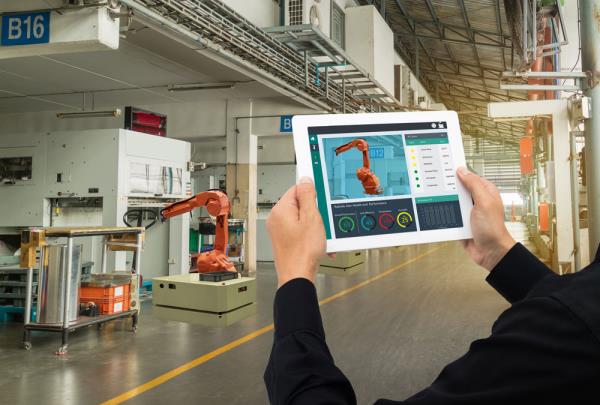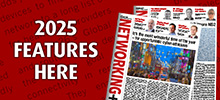06 June 2024

Harry Bowlby, managing director, Spitfire Network Services
We are living at the beginning of the era of ‘connected’ things. The applications of such technology are serving to improve life in general by advancing positive change across a wide spectrum of economic and social factors globally. Diving a bit deeper into the world of connected things we can find a whole range of IoT connectivity solutions with IoT SIM connectivity a huge growth area for the purpose of managing IoT assets.
For example, a smart controller can help retailers to manage their stock of refrigerated real estate more effectively. Such a device feeds back regular status reports (data) which can predict whether a refrigeration unit is likely to fail allowing it to pre-empt a service. And farmers (using a variety of sensors) can manage their crops much more efficiently, considering everything from soil moisture levels through to vehicle maintenance management.
IoT connectivity refers to how an IoT device (a simple sensor taking temperature readings or a self-driving vehicle, for example) connects to the cloud, to other devices or even IoT gateways. These IoT connectivity solutions can help customers across all industries, across all geographies and can easily scale up from smaller, unique scenarios to industrial behemoths - customers can be as varied as the devices that get connected. The technology is proving to be flexible, resilient, and secure giving unprecedented control over IoT assets. Today’s mobile IoT solutions can combine optimised and competitive data bundle packages with business grade routing and core network capabilities.
Predictive maintenance
There are numerous examples of predictive maintenance that span many different industries. For example, predictive maintenance in the manufacturing industry could involve preventing valuable machinery from breaking down by using predictive maintenance software and data analytics for manufacturing. IoT predictive maintenance uses data gathered through IoT technology to assess equipment to predict potential breakdown or outages more accurately. Such technology offers invaluable help for organisations by gathering real-time asset data that can be used to design effective maintenance strategies.
Making things efficient
Heavy industry and manufacturing rely on a mobile workforce to keep plant and machinery maintained and in good working order. Rotational rolling maintenance programs can be inefficient and usually don’t keep pace with localised nuances where usage dynamically changes. With so many factors involved that require a technician’s attention to keep services running smoothly, finding a solution to identify issues as they arise on site can help with service planning, building efficiencies and ultimately optimising revenue potential.

And, specifically, an IoT SIM connectivity solution is ideally placed to help in these scenarios - after all, connecting hundreds or thousands of devices in the field through a fixed line and router combination can be impractical due to device and sensor location and infeasible from a cost perspective. A SIM connectivity solution can use data via the mobile network. Being able to remotely monitor and predict maintenance requirements in the field enables a more efficient service. By using IoT data SIMs, businesses can greatly reduce the data connectivity costs (by a factor of 10) paying only for what data is used, compared to that of a fixed internet connection.
Data is key
Data is at the heart of everything. Within any IoT ecosystem you have smart devices with a variety of sensors and hardware that serve to collect, send, and act on any data that they collect from their environments. Devices then share the data collected from sensors to be analysed (in the cloud or locally). And the beauty is that machines are doing all the legwork here - very little human interaction is needed as devices can communicate with other related devices and act on the information accordingly. Let us be clear though, people can still interact if they wish to access the data for any reason. With the staggering volume of data that can be expected to be generated in these growing ecosystems, Artificial Intelligence (AI) will have a key role to play in the analysis (and subsequent action-taking) over all this data. At the end of the day all this data is only as useful as the decision-making that it empowers.
The bottom line
Using IoT connectivity solutions in an industrial/manufacturing scenario can help to reduce costs by prioritising and reducing the impact of productivity congestion via process optimisation and analysis. This can also help to ensure that people and machines are working in perfect harmony. Where you have a largely mobile workforce (teams of engineers or trouble-shooters), having useful and workable data can help prioritise and manage how and where they work which can result in considerable cost savings. The security element is also critical, with secure private networks facilitated by the right provider.
“Using IoT connectivity solutions in an industrial/manufacturing scenario can help to reduce costs by prioritising and reducing the impact of productivity congestion via process optimisation and analysis. This can also help to ensure that people and machines are working in perfect harmony.”
If you are a business that monitors equipment or are regularly repairing products for customers, IoT solutions can save money by reducing the number of unneeded call outs. Historically, a business would have to physically send an engineer onsite to assess things. If everything was fine with the kit, it was an unnecessary trip that still cost the business money. These days, data and alerts can be sent to you directly giving a clear picture regarding the condition of your equipment. Problem-solving from a desk is much less costly than pointless servicing appointments.
It doesn’t matter how big your business is or which industry you serve. Chances are that there is a mobile connectivity solution for you that can provide significant improvements in efficiency, that can truly extract value from data and, ultimately, deliver positive results for your bottom line.










